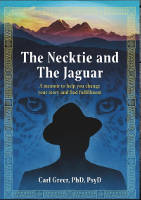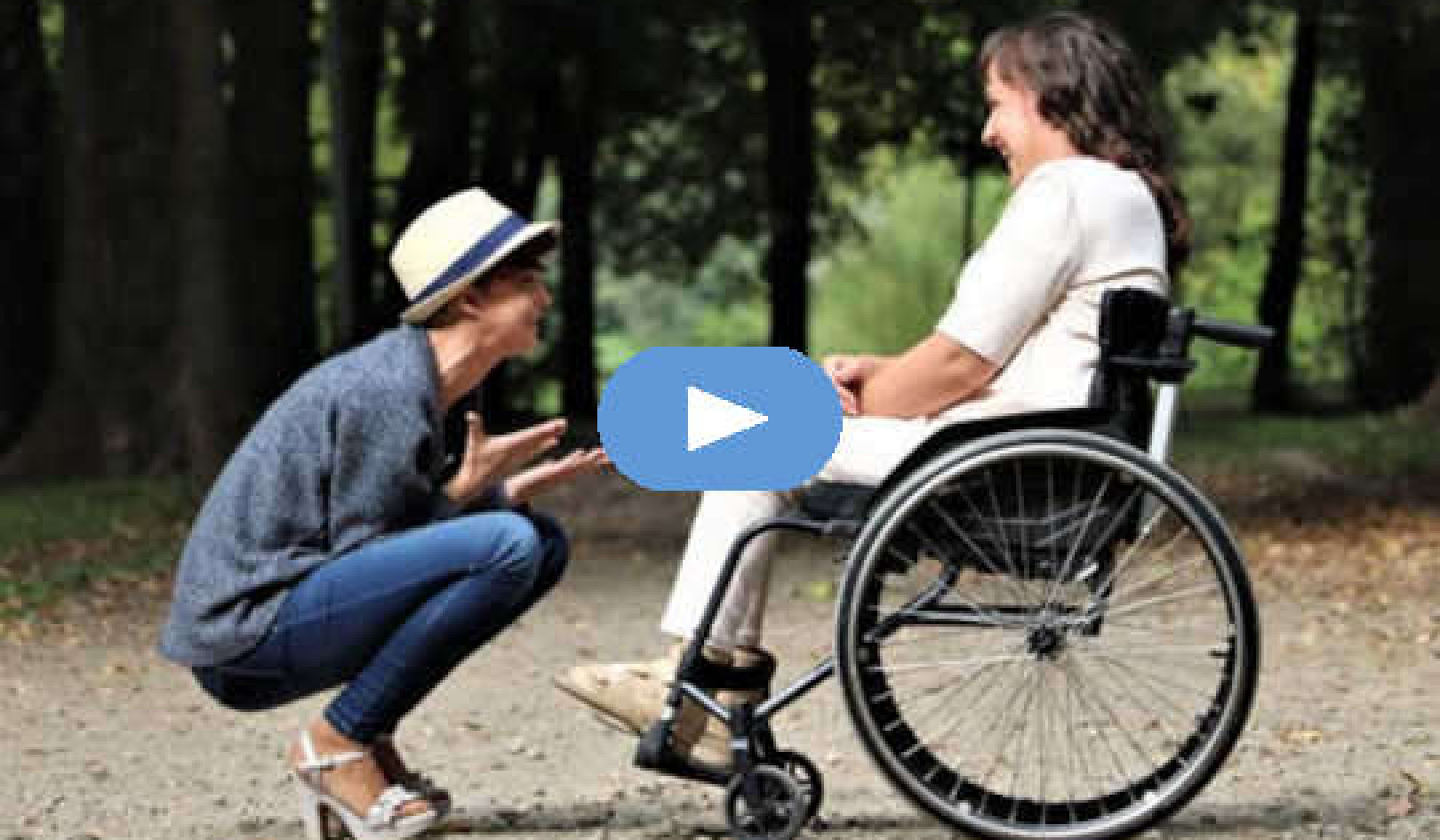
Image by Gerd Altmann
Narrated by Marie T. Russell
Watch video version on YouTube.
In the physical world, things have a past and a future, a beginning, and an end. For example, I’m sitting on a chair in my office at my desk that I’ve had for more than fifty years. At some point, this chair was just an idea in someone’s head. They designed it and then, it was engineered and constructed from materials like wood, fabric, and metal.
I don’t know how long its natural life will be. It squeaks when I lean back, which I could probably fix. At some point, whatever repairs I make to the chair won’t be enough to make it comfortable, and it will reach the end of its natural life. Then what? Will it be tossed in a landfill? Recycled or repurposed? I don’t know, but I do know this…
All things have a beginning and end, a useable life span that varies, including people. Our design is influenced by our parents’ DNA, our upbringing, our life choices, and our environment. You have a certain number of years you will live. Knowing that, and given your design, engineering, and construction, have you reflected on how long you will last and what you can do to extend your life?
What Does Your Future Look Like?
A chair doesn’t change much from year to year or decade to decade, but people do. We are always in process. We can do our best to evolve to meet changing conditions and attempt to halt or reverse deteriorating conditions such as aging joints that are beginning to ache. What are you doing to make sure that however many months and years you have left, you spend your time doing what matters to you?
I could get a new chair, but at 81 years old, I have bigger priorities than trying to fix my chair and it works well enough that I won’t replace it. What I have to fix and repair and even replace is related to my aging body. Maybe there will come a time when I need a new knee or hip. I’ve replaced some arteries as part of bypass surgery, and I addressed my prostate cancer with a course of proton therapy. I continue to try to exercise, eat well, and manage stress, but I certainly have to do more than I did back when I was in my early twenties, when I was hitchhiking across the country and often consuming nothing but coffee, bologna sandwiches, and milk to keep me going—or doing physical labor for eight, nine, or ten hours a day.
My squeaking chair and my appointments with my doctors to be sure that my health isn’t worsening remind me of the limited time I have and help me to stay focused on what’s most important to me.
New Priorities
I get requests for my time and attention that I would have said yes to thirty years ago but now turn down without regret if they don’t fit with my priorities. Feeling that I’m in the last chapter of my life is freeing because I am not making choices based on the idea that my time is unlimited so I can give it away to people and pursuits without stopping to think, “Is this truly how I want to spend my time?”
If you have trouble saying “no” to activities that you find draining or boring, how much more time are you going to devote to them before you start paying attention to designing a new future for yourself, starting today?
Maybe like my chair, you are showing signs of aging and deterioration. And maybe ypu are patching yourself up or living with your new limitations so that you’re not overwhelmed by the amount of time spent doing what you believe you ought to do to stay healthy. If so, are you also listening to the messages your body is giving you so that you can change the story of your health?
Are you heeding its warnings that your time is limited so if you want to get done what’s on your bucket list, if you want to live with a sense of happiness and fulfillment, you might want to think about making more conscious choices?
If you are listening to your body and taking care of it, can you think of ways to make more time for doing what you know you must do—such as exercise—and less time doing what is optional and that makes you feel the clock is ticking away too quickly?
The pandemic awakened many people to the choices they have been making. You might think that you don’t have enough good choices before you to make much of a change in your life, but is that really true?
If you have always wanted to travel to a particular place, complete a project such as writing a memoir, or mentor someone—or whatever your far-off goal has been, what’s holding you back from starting the process of making that dream a reality?
Couldn’t you start today in some small way?
I believe it’s never too late to change. Could you be open to that belief?
Resources for Change
Sometimes, what you need for bringing about a much-desired change is resources of time, energy, and money. Are you sure that you have exhausted every possible avenue in researching what resources are available to you?
Sometimes, what you need is optimism. Have you talked yourself out of achieving a goal only to see someone else who has fewer resources do what you wanted to do? You could harbor jealousy toward that other person, but why not explore how they overcame their obstacles so that you might overcome yours?
Sometimes, what you need is creativity and flexibility. Maybe the time has passed for you to achieve your goal in the form you imagined but perhaps there’s another way to reach it. You might not own a lake house despite years of yearning for one. But maybe you can spend more time in lake houses enjoying them without owning, using your resources wisely to figure out ways to make that happen. Creativity and flexibility can help you find ways to change your story that you hadn’t thought of before.
Sometimes, what you need is more time, but we all are allotted the same number of hours and minutes in a day. Time passes whether you are doing what you say you want to do or you are busy doing something you think you ought to do.
Living with Greater Awareness
You don’t have to wait for your chair to start squeaking or for health challenges related to aging to awaken you to your potential for living a more fulfilling life and using your time more consciously, in ways that give you greater satisfaction. You can choose to do that now. Will you procrastinate, or will you begin taking charge of your time and your schedule?
If you’re ready to live more conscious of the limits of your time on earth, what one thing could you do today to become more conscious of your choices as you make them and the choices you’ve made in the past that didn’t turn out well?
What could you do to free up more time for what you say are your priorities?
What in your life is worth your attention but not receiving it?
Tomorrow starts today. What can you do to change, and how quickly will you take action to design a new future for yourself and bring it into being?
Copyright 2021 by Carl Greer. All Rights Reserved.
Book by this Author
The Necktie and The Jaguar: A memoir to help you change your story and find fulfillment
by Carl Greer, PhD, PsyD
 Compelling reading for anyone seeking the courage to make more conscious choices and live fully awake, The Necktie and The Jaguar is a memoir with thought-provoking questions that encourage self-exploration. Author Carl Greer—businessman, philanthropist, and retired Jungian analyst and clinical psychologist—offers an illuminating roadmap to individuation and personal transformation.
Compelling reading for anyone seeking the courage to make more conscious choices and live fully awake, The Necktie and The Jaguar is a memoir with thought-provoking questions that encourage self-exploration. Author Carl Greer—businessman, philanthropist, and retired Jungian analyst and clinical psychologist—offers an illuminating roadmap to individuation and personal transformation.
Writing about his spiritual practices and reflecting on his vulnerabilities, he tells of honoring his longings for purpose and meaning, journeying to transpersonal realms, reinventing his life, and devoting himself to service to others while living with deep respect for Pachamama, Mother Earth. His memoir is an inspirational testament to the power of self-discovery. As Carl Greer learned, you don’t have to feel trapped in a story someone else has written for you.
For more info and/or to order this book, click here. Also available as a Kindle edition.
About the Author
 Carl Greer, PhD, PsyD, is a retired clinical psychologist and Jungian analyst, a businessman, and a shamanic practitioner, author, and philanthropist, funding over 60 charities and more than 850 past and current Greer scholars. He has taught at the C.G. Jung Institute of Chicago and been on staff at the Replogle Center for Counseling and Well-Being.
Carl Greer, PhD, PsyD, is a retired clinical psychologist and Jungian analyst, a businessman, and a shamanic practitioner, author, and philanthropist, funding over 60 charities and more than 850 past and current Greer scholars. He has taught at the C.G. Jung Institute of Chicago and been on staff at the Replogle Center for Counseling and Well-Being.
The shamanic work he does is drawn from a blend of North American and South American indigenous trainings and is influenced by Jungian analytical psychology. He has trained with Peruvian shamans and through Dr. Alberto Villoldo’s Healing the Light Body School, where he has been on staff. He has worked with shamans in South America, the United States, Canada, Australia, Ethiopia, and Outer Mongolia. He is the best-selling, award-winning author of Change Your Story, Change Your Life and Change the Story of Your Health. His new book, a memoir titled The Necktie and The Jaguar.
Learn more at CarlGreer.com.




























